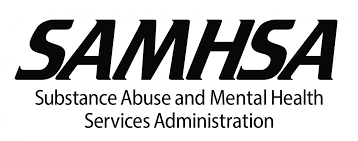Helping Children and Adolescents Cope with Violence and Disasters: What Community Members Can Do
Each year, children and adolescents experience disasters and other traumatic events. Parents, rescue workers, and members of the larger community can help children start the process of recovery and overcome these experiences.
Read MoreHelping Children and Adolescents Cope with Violence and Disasters: What Parents Can Do
Mental health is an important part of overall health for children and adolescents. Many adults with mental disorders had symptoms that were not recognized or addressed in childhood or adolescence. Help raise awareness about the importance of children’s mental health and early diagnosis and treatment by sharing information and materials based on the latest research.
Read MoreHelping Others Through Catastrophic Stress
How to Cope with Sheltering-in-Place
Sheltering in place means people are asked bylocal officials to stay where they are for a periodof time. You may be at your own or a relative’shome, school, or work. Sheltering in place maybe required because of an emergency such as athreat of violence, a weather situation such as atornado or hurricane, or a public…
Read MoreHow to Prepare for Emergencies
Everyone knows the Red Cross helps people during emergencies. But you may not know that it’s also part of our mission to help you help yourself! Becoming “Red Cross Ready” for an emergency means following our simple steps in advance to ensure you can weather a crisis safely and comfortably.
Read MoreLockdown Drills for Students with Disabilities
Lockdown drills are increasingly common in classrooms across the United States, with 95.7 percent of public schools reporting that they practiced a lockdown drill with their students during the 2017–2018 school year.
Read MoreModel School Door Numbering System
When emergencies occur, the rapid response of emergency workers to the incident can be critical. Many schools have dozens of doors providing entrance and egress to their buildings. During an emergency it may be necessary for responders to gain access through the door closest to the emergency scene
Read MoreNational Center for School Crisis and Bereavement
Materials and guidance for schools experiencing crises or helping grieving students. Resources and guidelines to prepare to support children in times of crisis and loss.
Read MoreNational Child Traumatic Stress Network
Research suggests that approximately 25% of American children will experience at least one traumatic event by the age of 16. A child’s reactions to trauma can interfere considerably with learning and/or behavior at school. Schools serve as a critical system of support for children who have experienced trauma.
Read MorePsychological First Aid for Children, Parents, and Other Caregivers After Natural Disasters
Part of the Listen, Protect, Connect series, this guide provides practical advice for parents and other caregivers on the three steps of psychological first aid to help children cope with natural disasters. PDF format.
Read MoreReady Georgia
Launched in January 2008, Ready Georgia is a statewide campaign supported by the Georgia Emergency Management Agency/Homeland Security (GEMA/HS) aimed at motivating Georgians to take action to prepare for a disaster.
Read MoreResponding to a School Crisis
Research suggests that approximately 25% of American children will experience at least one traumatic event by the age of 16. A child’s reactions to trauma can interfere considerably with learning and/or behavior at school. Schools serve as a critical system of support for children who have experienced trauma.
Read More








